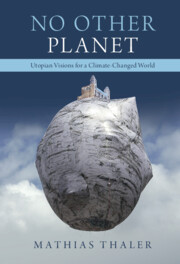67 results
Chapter 5 - American Spirituality
-
-
- Book:
- The Cambridge Companion to American Utopian Literature and Culture since 1945
- Published online:
- 09 May 2024
- Print publication:
- 16 May 2024, pp 100-114
-
- Chapter
- Export citation
Chapter 15 - The Time of New Histories
-
-
- Book:
- The Cambridge Companion to American Utopian Literature and Culture since 1945
- Published online:
- 09 May 2024
- Print publication:
- 16 May 2024, pp 271-286
-
- Chapter
- Export citation
Apocalyptic praxis in Evagrius of Pontus and Francis of Assisi
-
- Journal:
- Scottish Journal of Theology , First View
- Published online by Cambridge University Press:
- 06 May 2024, pp. 1-14
-
- Article
- Export citation

The Last Man and Gothic Sympathy
-
- Published online:
- 22 February 2024
- Print publication:
- 28 March 2024
-
- Element
- Export citation
Handmaids of the Apocalypse: Queen Gerberga, Empress Adelaide, and the Ottonian Tenth Century
-
- Journal:
- Church History / Volume 92 / Issue 4 / December 2023
- Published online by Cambridge University Press:
- 19 March 2024, pp. 777-799
- Print publication:
- December 2023
-
- Article
-
- You have access
- HTML
- Export citation
Preparedness Behavior and the apocalypse: religion and politics in the post 2020 election era
-
- Journal:
- Politics and Religion / Volume 16 / Issue 4 / December 2023
- Published online by Cambridge University Press:
- 29 September 2023, pp. 585-604
-
- Article
-
- You have access
- Open access
- HTML
- Export citation

Royal Ideologies in the Book of Revelation
-
- Published online:
- 22 June 2023
- Print publication:
- 06 July 2023

The Cambridge Companion to Religion and War
-
- Published online:
- 04 May 2023
- Print publication:
- 11 May 2023
Chapter 2 - The Domestic Near Future 2
-
- Book:
- The Near Future in Twenty-First-Century Fiction
- Published online:
- 07 August 2023
- Print publication:
- 22 December 2022, pp 41-61
-
- Chapter
- Export citation
Chapter 30 - David Foster Wallace’s Ecologies
- from Part IV - Systems
-
-
- Book:
- David Foster Wallace in Context
- Published online:
- 18 November 2022
- Print publication:
- 01 December 2022, pp 325-334
-
- Chapter
- Export citation
Chapter 8 - Thomas Browne’s Retreat to Earth
- from Part II - Grounding the Remembrance of the Dead
-
-
- Book:
- Memory and Mortality in Renaissance England
- Published online:
- 06 October 2022
- Print publication:
- 13 October 2022, pp 159-176
-
- Chapter
- Export citation

No Other Planet
- Utopian Visions for a Climate-Changed World
-
- Published online:
- 07 October 2022
- Print publication:
- 22 September 2022
Chapter 5 - If This Goes On
-
- Book:
- No Other Planet
- Published online:
- 07 October 2022
- Print publication:
- 22 September 2022, pp 222-280
-
- Chapter
- Export citation
Chapter 5 - Narratives about the Panagia
-
- Book:
- The Virgin Mary in Byzantium, <i>c</i>.400–1000
- Published online:
- 20 August 2022
- Print publication:
- 08 September 2022, pp 179-210
-
- Chapter
-
- You have access
- Open access
- HTML
- Export citation
6 - Healing the Soul
-
- Book:
- Hermetic Spirituality and the Historical Imagination
- Published online:
- 16 June 2022
- Print publication:
- 30 June 2022, pp 145-186
-
- Chapter
- Export citation
The Image of the Beast as a Parody of the Two Witnesses
-
- Journal:
- New Testament Studies / Volume 68 / Issue 3 / July 2022
- Published online by Cambridge University Press:
- 09 June 2022, pp. 344-350
- Print publication:
- July 2022
-
- Article
- Export citation
Chapter 21 - The Environment
- from Part V - Material Contexts
-
-
- Book:
- Don DeLillo In Context
- Published online:
- 19 May 2022
- Print publication:
- 02 June 2022, pp 196-206
-
- Chapter
- Export citation
14 - Antisemitism in Medieval Art
- from Part II - Medieval Times
-
-
- Book:
- The Cambridge Companion to Antisemitism
- Published online:
- 05 May 2022
- Print publication:
- 02 June 2022, pp 248-270
-
- Chapter
- Export citation
7 - Limiting the Dangers of Utopian Hope
- from Part III - Implications for Ideal Theory
-
- Book:
- Apocalypse without God
- Published online:
- 14 April 2022
- Print publication:
- 21 April 2022, pp 175-190
-
- Chapter
-
- You have access
- Open access
- HTML
- Export citation



